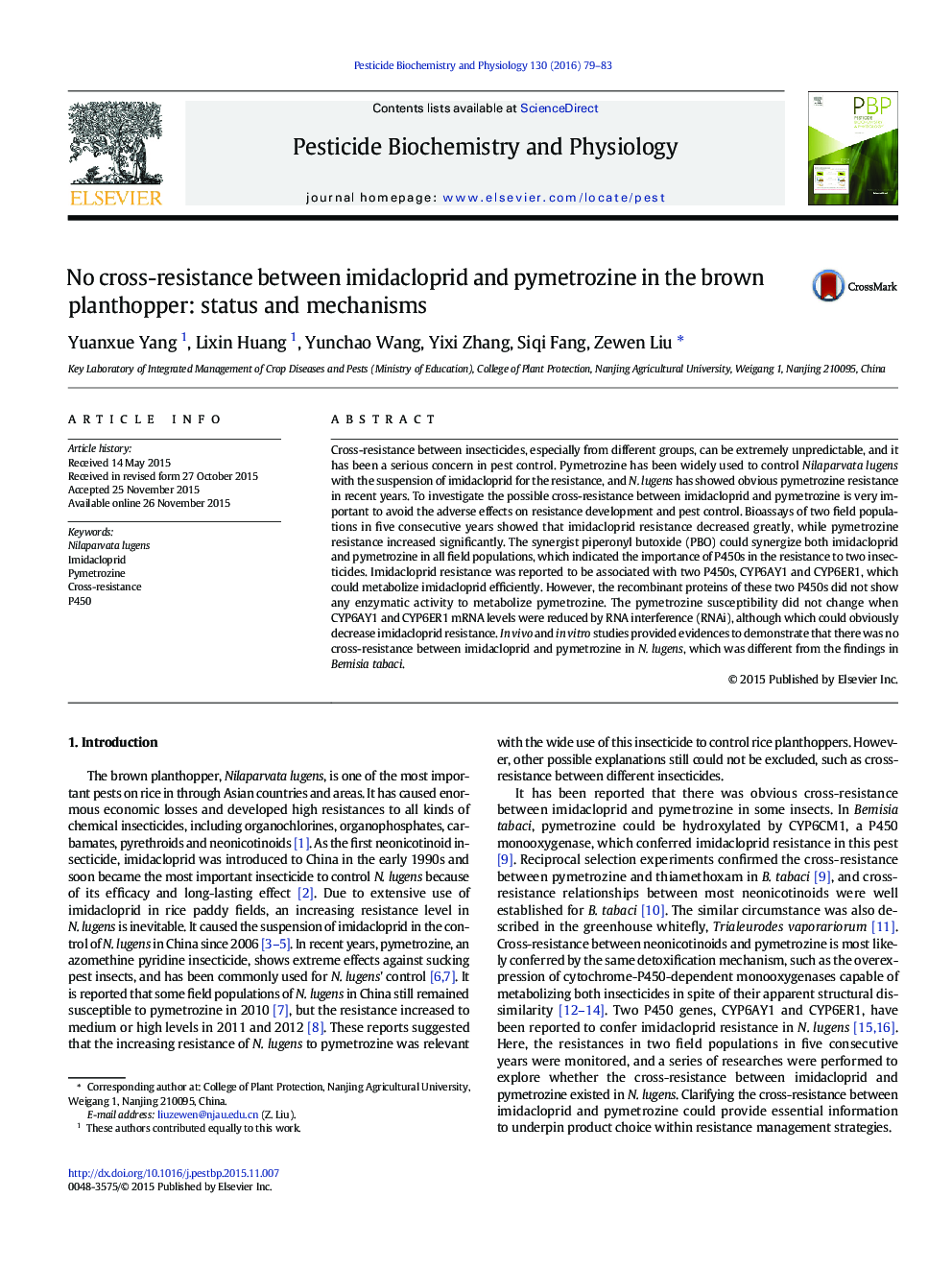| Article ID | Journal | Published Year | Pages | File Type |
|---|---|---|---|---|
| 2008945 | Pesticide Biochemistry and Physiology | 2016 | 5 Pages |
•No cross-resistance between imidacloprid and pymetrozine•CYP6AY1 and CY6ER1 cannot metabolize pymetrozine.•The situation of cross-resistance is different from Bemisia tabaci.
Cross-resistance between insecticides, especially from different groups, can be extremely unpredictable, and it has been a serious concern in pest control. Pymetrozine has been widely used to control Nilaparvata lugens with the suspension of imidacloprid for the resistance, and N. lugens has showed obvious pymetrozine resistance in recent years. To investigate the possible cross-resistance between imidacloprid and pymetrozine is very important to avoid the adverse effects on resistance development and pest control. Bioassays of two field populations in five consecutive years showed that imidacloprid resistance decreased greatly, while pymetrozine resistance increased significantly. The synergist piperonyl butoxide (PBO) could synergize both imidacloprid and pymetrozine in all field populations, which indicated the importance of P450s in the resistance to two insecticides. Imidacloprid resistance was reported to be associated with two P450s, CYP6AY1 and CYP6ER1, which could metabolize imidacloprid efficiently. However, the recombinant proteins of these two P450s did not show any enzymatic activity to metabolize pymetrozine. The pymetrozine susceptibility did not change when CYP6AY1 and CYP6ER1 mRNA levels were reduced by RNA interference (RNAi), although which could obviously decrease imidacloprid resistance. In vivo and in vitro studies provided evidences to demonstrate that there was no cross-resistance between imidacloprid and pymetrozine in N. lugens, which was different from the findings in Bemisia tabaci.
Graphical AbstractFigure optionsDownload full-size imageDownload as PowerPoint slide
